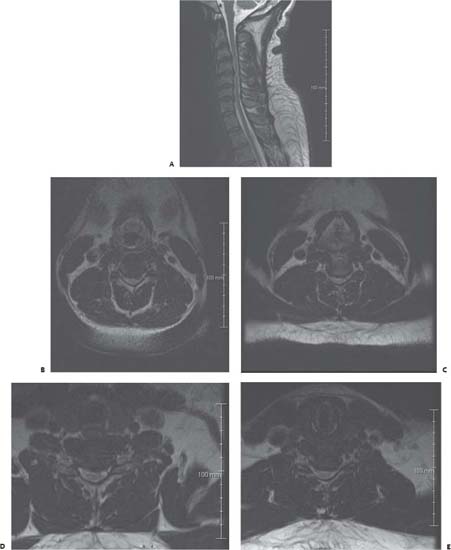Case 88 Anterior versus Posterior Approach to the Cervical Spine Fig. 88.1 Cervical spine T2-weighted magnetic resonance images with (A) midsagittal section and axial sections through (B) C3–C4, (C) C4–C5, (D) C5–C6, and (E) C6–C7, respectively.

 Clinical Presentation
Clinical Presentation
 Questions
Questions
 Answers
Answers
< div class='tao-gold-member'>
Only gold members can continue reading. Log In or Register to continue



